
With the snow finally at the back of our minds (wait, we’re in Florida, snow is only ever in the back of our minds), we can finally start thinking about the joys of our outdoor spaces. That means lawn care and you can’t finish the job right without having the best leaf blower in your hands or on your back. We pulled together our favorite backpack, cordless, and even electric leaf blowers to help you decide what works for the way you work.
Want even more? Be sure to click on the headlines to dive deeper into our recommendations or get more info on specific models.
Stihl BR 800 C-E Magnum Backpack Leaf Blower
Launched way back in 2018, Stihl’s BR 800 C-E Magnum is still the best bapckack blower by our crew’s measure. While it’s not the strongest on the market today, it’s still the most powerful in Stihl’s lineup. It’s capable of producing 239 MPH airspeed with 912 CFM for velocity. The more important number is its 41 Newton rating for overall blowing force.
It’s not just about power, though. This built-in-America backpacl blower uses a side-mounted pull start that sets it apart. Rather than starting the blower and then putting it on, you can get settled first, and start the BR 800 X Magnum once you’re ready to get blowing. When it comes to professional-grade gas leaf blowers, it doesn’t get much more convenient.
Price: $699.99
Best Cordless Battery-Powered Backpack Leaf Blower
EGO Commercial 56V Backpack Leaf Blower LBPX8000
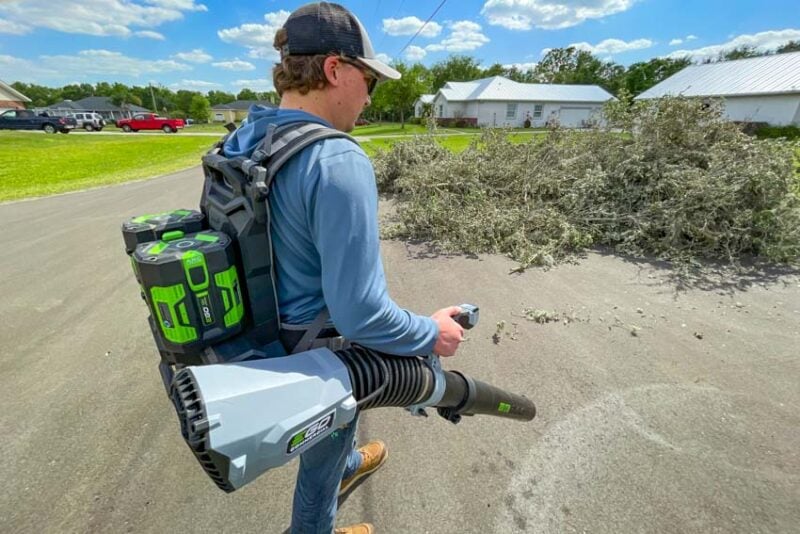
EGO has been pushing the benchmark higher for battery-powered lawn care equipment since it launched. Having erased excuses in the residential market, the EGO Commercial Backpack Blower is tackling professional needs.
Rated at 26 Newtons with 800 CFM and 219 MPH, it registered 27.9 Newtons in our tests, easily becoming the most powerful cordless blower we’ve tested. Combined with a comfortable harness design, an innovative digital control system, and the runtime of two batteries, EGO’s LBPX8000 earns two thumbs up from our team as the best cordless backpack leaf blower.
Price: $399.00 bare tool, $699.00 kit with two 6.0Ah batteries and dual-port charger
Strongest Leaf Blower
Echo PB-9010T Backpack Leaf Blower
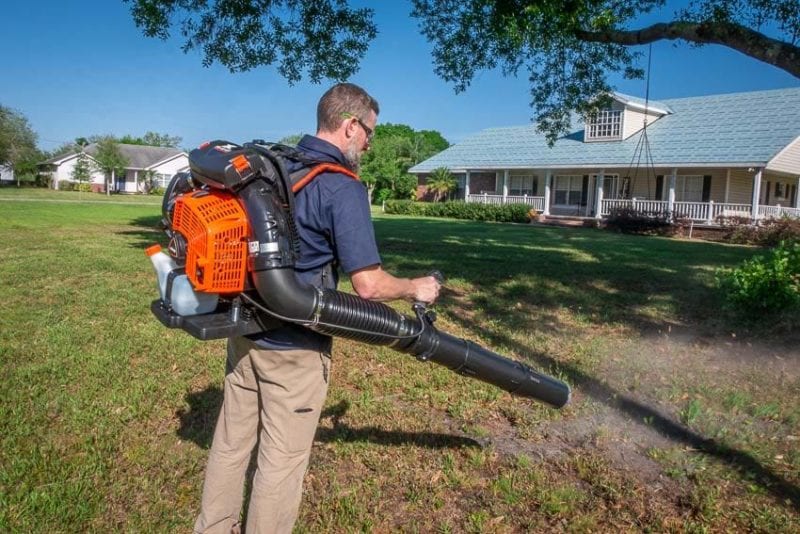
If it’s the highest blowing force you’re after, take a look at Echo’s PB-9010 and PB-9010T. Earning our pick as the strongest leaf blower, this model is rated at 48 Newtons and it left our force meter begging for mercy by pinging a beastly 52 Newtons!
As for the other stats, you’re looking at 220 MPH for airspeed and an incredible 1110 CFM… just in case you’re trying to reverse the spin of the earth.
Price: $629.99
Stihl BG C-E Handheld Leaf Blower
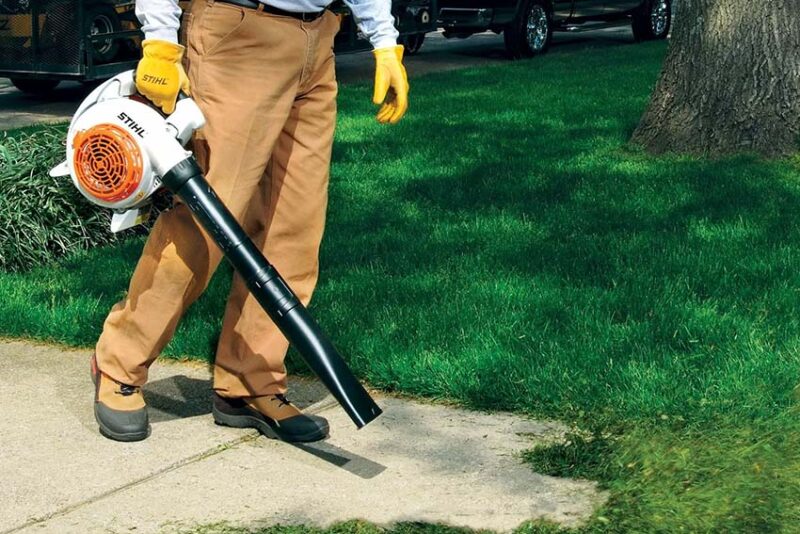
Turning our attention to handheld models, the best gas leaf blower is Stihl’s BG C-E. This unit is built in America and uses a 27.2cc engine to reach up to 190 MPH and 365 CFM. With a total blowing force of 15 Newtons, it’s as strong as you can hope for on a gas handheld unit.
Making the blower more convenient, Stihl includes its Easy2Start system that requires less pull effort to crank the engine and a vibration-reducing design that reduces overall fatigue.
Price: $309.00
It used to be that you went with a cordless blower for either convenience or noise. Today, some cordless handheld blowers exceed the blowing performance of gas handheld models by a significant margin. So whichever your main priority is, we have two main picks for you to consider.
EGO 56V 765 CFM Cordless Leaf Blower
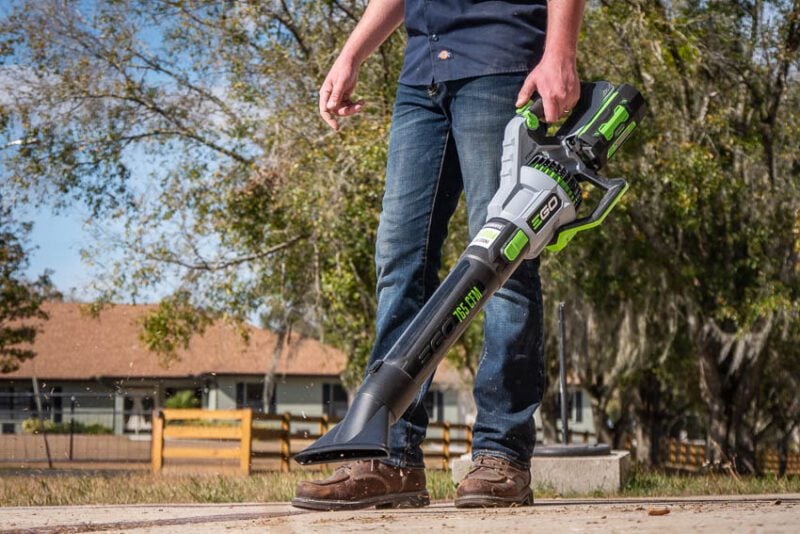
If you’re looking for the most powerful cordless leaf blower, go for EGO’s 765 CFM model. Using a 5.0Ah battery, it hit 25.3 Newton on our meter. Stepping up to a 10.0Ah battery, it hit 26.1 Newtons!
Of course, you can get even more with EGO’s Commercial backpack blower, so no matter which style you’re looking for, EGO has the highest performance.
Price: $229.00 bare tool, $329.00 with a 5.0Ah battery and charger, and $499.00 with two 5.0Ah batteries and charger
Ryobi 40V HP Brushless 730 CFM Whisper Series Leaf Blower
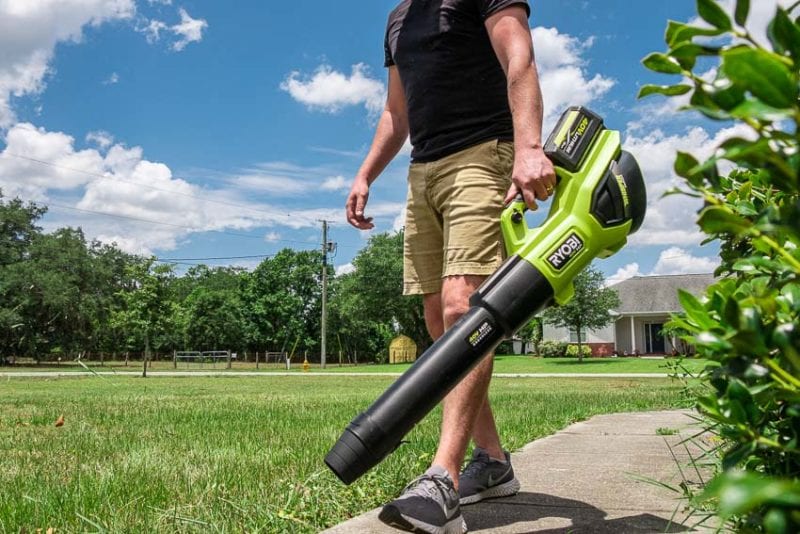
If low noise and high performance are big priorities for you, Ryobi’s 40V HP Brushless Whisper Series blower produces up to 730 CFM and 190 MPH. While it’s not quite as strong as EGO’s, we hit 21.7 Newtons in our testing, crushing the 15-Newton max you see from handheld gas models.
Adding to its appeal, Ryobi’s design team did a ton of work to reduce the overall noise level. At full blast, we measured just 76 decibels at our operator’s ear. Even compared to less-powerful cordless blowers, it’s noticeably quieter.
Price: $229.00 bare, $329.00 with two 4.0Ah batteries and a charger
Best Corded Electric Leaf Blower
Toro F700 Corded Handheld Leaf Blower
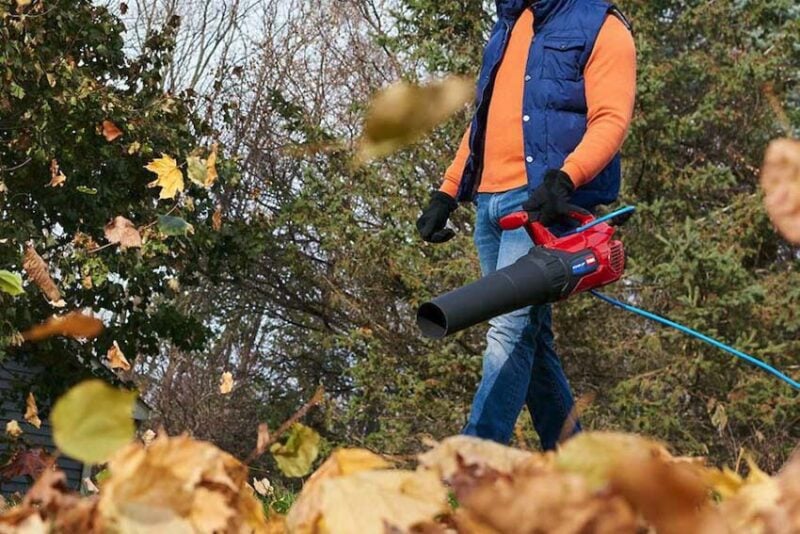
120V AC continues to be a viable power source for some lawn equipment thanks to the low cost of the products you can buy. Of those, the best corded leaf blower is Toro’s F700. It’s capable of producing 725 CFM with 140 MPH airspeeds. With its 12-amp motor, you don’t have to worry about popping breakers. Plus, it weighs just 6.6 pounds for those of you concerned about weight. Perhaps best of all, you can get your hands on this model for around $80.
Price: $79.99
Best Walk-Behind Leaf Blower
Billy Goat F602X Walk-Behind Leaf Blower
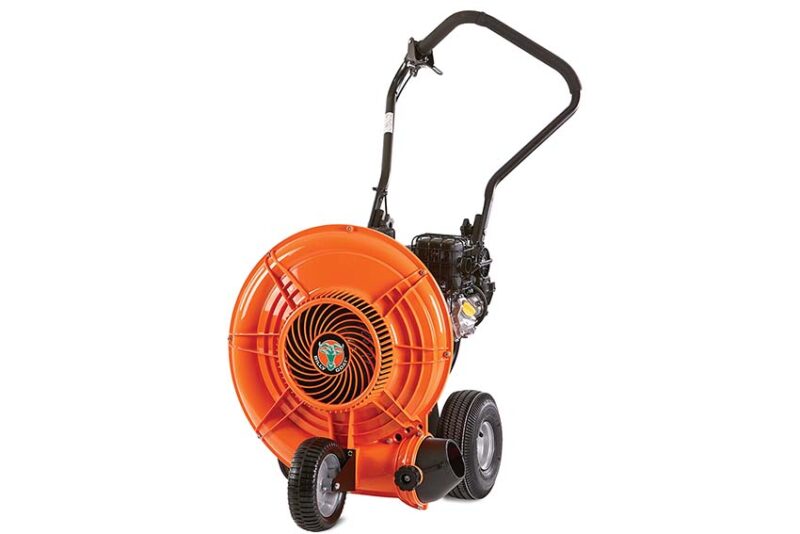
When you need a leaf blower with Beast Mode, you need a walk-behind model. Rolling on wheels instead of carrying it in your hand or on your back, you can get away with a bigger engine and heavier design. If that’s what you’re after, Billy Goat makes the best walk-behind leaf blowers. From push models to self-propelled (they even have stand-on models), the range covers just about any situation.
If you’d like to narrow it down, we like the Billy Goat F602X as a balance of performance and price. While it’s more expensive than the popular Champion 200947, Billy Goat uses a Briggs & Stratton 950 XR Professional Series engine, giving it a longer-lasting power plant. Reasonably light for its class at 83 pounds, Billy Goat gets 200 MPH and 1150 CFM from this build.
Price: $875.00
Best Leaf Blower Vacuum
Ryobi 40V HP Brushless Leaf Blower/Vacuum
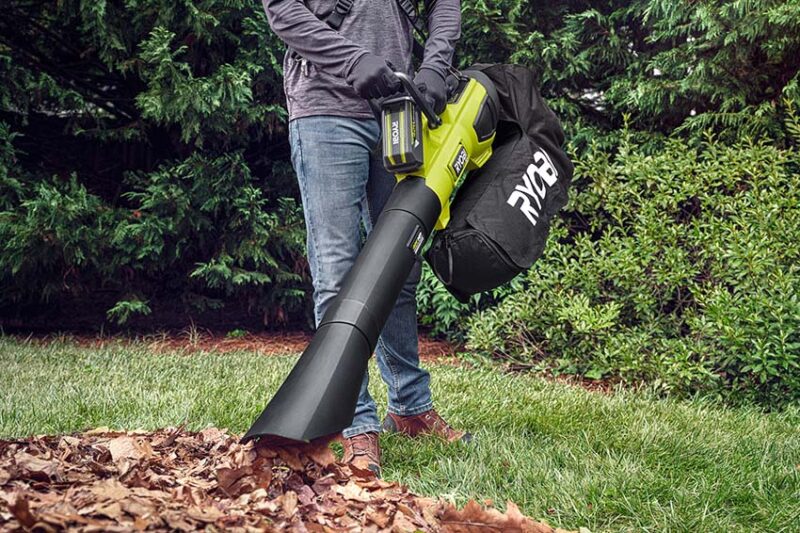
In earning our selection as the best leaf blower vacuum, Ryobi did a lot of things right to put other cordless and gas competitors in its rearview mirror. It starts with performance. With 600 CFM and 100 MPH, it measured 16.1 Newtons on our meter, eclipsing the 15 Newetons of Stihl’s SH 86 C-E and other gas models.
Then there’s the design. Convertible blower vacs often rely on awkward bag and nozzle configurations. However, Ryobi kept the whole thing in line by creating a system that actually flips the impeller around to change the airflow direction. It’s much easier to use than systems that have bags or nozzles sticking out at a 90° angle to make it work.
Price: $369.00 bare, $469.00 with two 4.0Ah batteries and a charger
Best Leaf Blower for the Money
Echo PB-2520 Handheld Leaf Blower
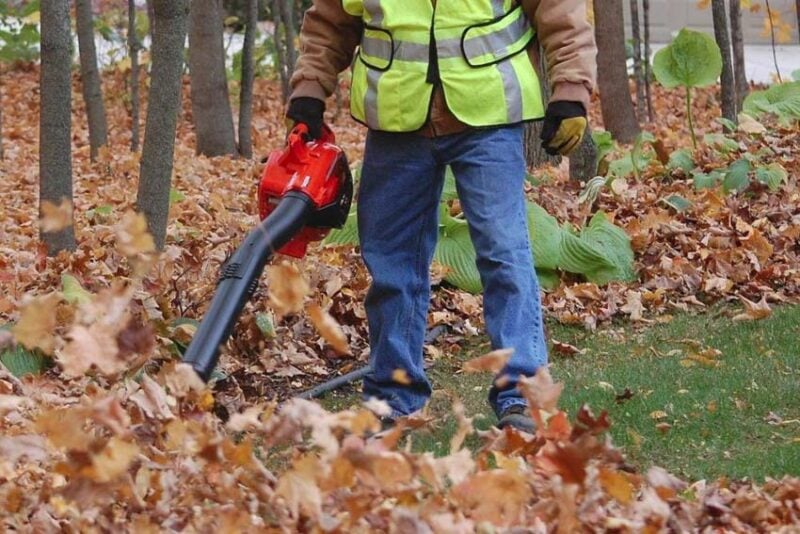
With Echo’s PB-2520, you get a professional-grade built-in-America handheld blower for just $169.00—well under the price of Stihl’s BG 86 C-E which was our top pick. Its 25.4cc engine cranks out 453 CFM and 170 MPH, actually beating out Stihl in overall blowing force with 15.8 Newtons. It may not have as many comfort and ease-of-use features as Stihl, but it’s a hardworking, reliable model you can count on.
Price: $169.00
Leaf Blower Buying Guide – What We Look For
Gas, Battery, or Electric?
Choosing a power source is a big part of your blower-buying journey. Here’s a breakdown of the pros and cons of each power source:
Gas
Pros
- Low to mid-range cost
- Most powerful backpack and walk-behind models
- Easy to find service and repair shops
Cons
- Loudest and often requires hearing protection
- Produces emissions
- You have to mix gas and oil
- Requires regular maintenance
- Often requires service if it sits for a season
- Some areas restrict or prohibit use
Battery-Powered
Pros
- Most powerful handheld models
- Quieter operation, typically below 85 decibels at the operator’s ear.
- No direct emissions during use
- No fuel to mix
- Little to no maintenance is required
- Can sit for a long time and start right up with a charged battery
- No restrictions on use
Cons
- More expensive than equivalent gas or corded models
- Batteries take longer to recharge than filling a gas tank
- Difficult to find nearby service/repair centers if needed
Corded Electric
Pros
- Quiet operation
- No fuel to mix
- Unlimited runtime
- No direct emissions during use
- Lighter than most gas and cordless models
- Little to no required maintenance
- Most affordable
- Can sit for a long time and start right up
- No restrictions on user
Cons
- Not as powerful as gas or cordless models
- You have to have an AC power source and drag a cord around
- Typically treated as a throw-away item rather than repaired
Noise
Leaf blowers and noise complaints have come to the forefront of OPE conversation recently. In all seriousness, I’m listening to our neighbor’s lawn guy using a backpack blower as I’m writing this. Talk about irony!
Whether you’re for or against gas blowers, there’s no denying they produce significantly more noise than their electric and battery-powered counterparts.
ANSI regulates that you test noise from 50 feet, focusing on bystanders. We test at the operator’s ear. Most cordless and electric models produce less than 90 decibels, and a good chunk of them are under 85 decibels—OSHA’s threshold for hearing protection. On the other hand, gas blowers are typically well over 90 decibels, and powerful backpack or walk-behind models can be over 100 decibels.
The point is, the power source you choose for your blower has a significant effect on how much noise you’re going to produce.
CFM, MPH, and Newton Force
Leaf blower have three forms of performance measurement for you to consider. Almost all brands rate CFM and MPH. More recently, Newtons are becoming a standard measurement, and that’s a good thing.
CFM measures airflow. The higher the measurement, the better you’re able to keep debris that’s in motion moving.
MPH measures airspeed. The higher the value, the heavier an object you can move with your blower.
Both numbers are important because they give you an idea of a blower’s ability to get clutter moving and keep it going. However, it’s Newton force that’s the most important number when you’re comparing overall blowing force. There’s no easy equation because things such as temperature and humidity affect it. The best way is to measure it with a force meter, which is how we test.
Learn more about the relationship between CFM, MPH, and Newton force here.
Weight, Balance, and Comfort
Weight plays a big role in how fatiguing it is to use a blower. In general, the lighter the better. That said, a well-balanced blower that weighs a little more is better than one that’s off-balance. For handheld blowers, look for models that naturally balance downward 5 – 8 feet in front of you, including a battery or gas and oil.
Comfort is another consideration. For handheld blowers, it’s primarily about the handle design. Look for handles that fit naturally in your hand and avoid any seams that are rough against your skin.
For backpack blowers, it’s all about the harness. Look for models with plenty of padding around your shoulders and hips. You want enough adjustment in the straps to fit everyone on your crew. The hip strap should be substantial enough to move the weight of the blower to your hips without creating pressure points. A chest strap is also useful to keep the shoulder straps from moving much.
The other piece of the comfort puzzle is your back. Look for a harness that has a gap so air can flow and help cool you down. Some models even have active cooling that forces air across your back.
Price and Value
If you’re like us, you have a budget when you’re shopping and you want the best leaf blower you can get for the money you’re willing to spend. In our opinion, it’s not just about performance. However, your priorities may be different than ours. So take a look at the list below and decide which characteristics are the most important to you as you shop.
- Performance (CFM, MPH, and Newtons)
- Runtime/fuel tank size
- Power source (gas, battery, or electric)
- Weight and balance
- Comfort
- Noise level
- Convenience/ease-of-use
- Maintenance requirements
- Commercial or residential build quality
- Storage space
- Retailer availability
- Serviceability
- Warranty
Ever check out a “review” site and you can’t tell if they actually tested the tools or if they’re just “recommending” the Amazon top sellers? That’s not us. We won’t recommend anything unless we’d actually use it ourselves and we don’t really care who the primary retailer is. It’s all about giving you a legitimate recommendation and our honest opinion of each product.
We’ve been in business since 2008 covering tools, writing reviews, and reporting on industry news in the construction, automotive, and lawn care industries. Our Pro reviewers work in the trades and have the skills and experience to know whether tools can perform well in the field.
Each year, we bring in and review more than 250 individual products. Our team will put our hands on hundreds of additional tools at media events and trade shows throughout the year.
We consult with innovators in the technology and design of tools to gain a broader grasp of where these products fit and how they work.
We work with more than two dozen professional contractors around the United States who review products for us on real job sites and consult with us on testing methods, categories, and weighting.
We’ll provide more than 500 pieces of new content this year absolutely free for our readers—including objective evaluations of individual tools and products.
The end result is information you can trust because of the editorial, scientific, and real-world professional experience we collectively utilize each and every time we pick up and test a tool.






